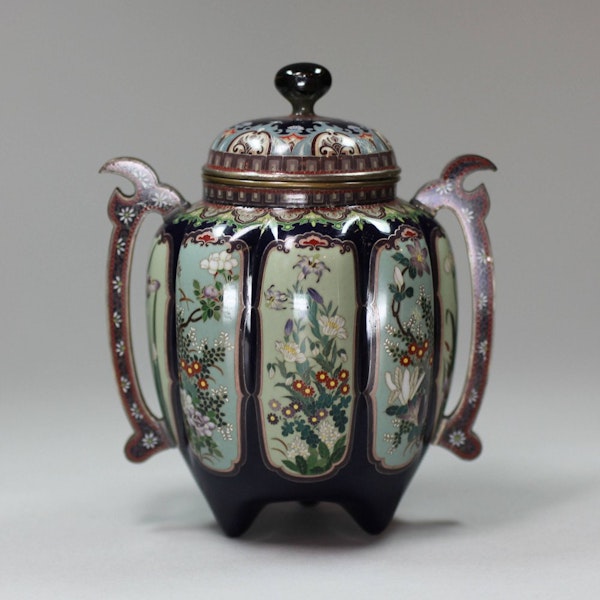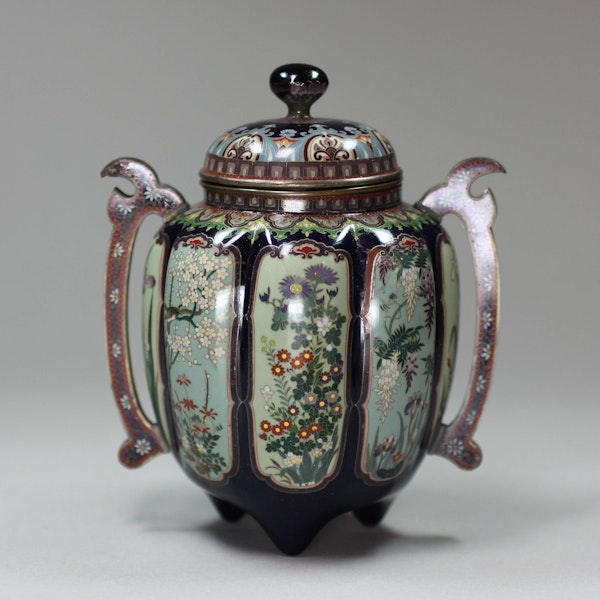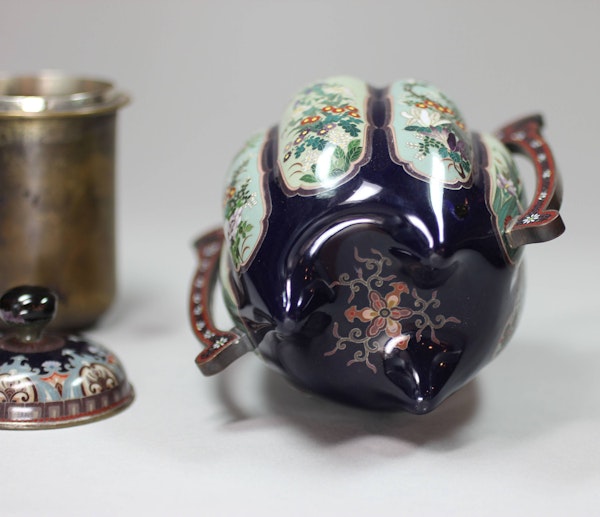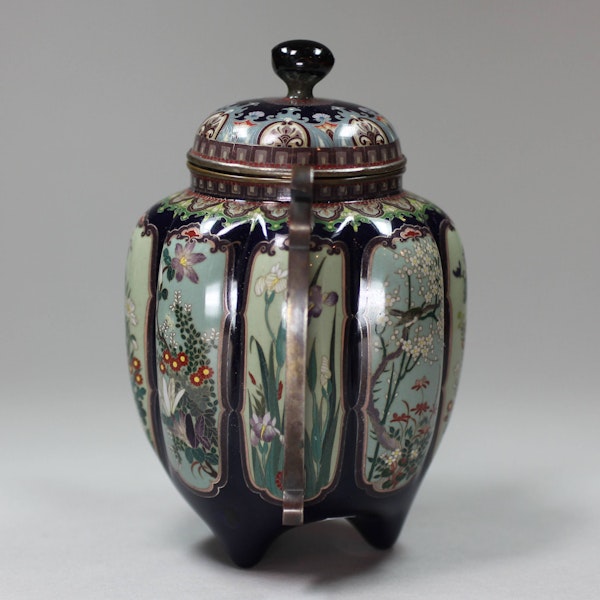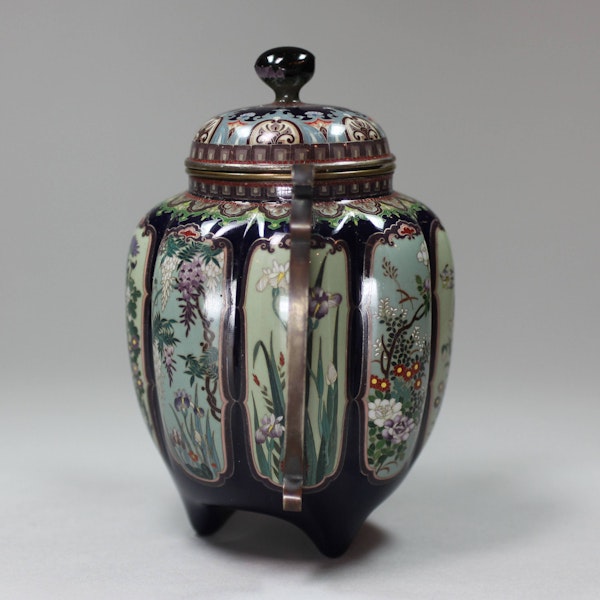A fine silver-wired Japanese cloisonné eight-lobed twin-handled koro and cover, Meiji period
A fine silver-wired Japanese cloisonné eight-lobed twin-handled koro and cover, Meiji period
POA
Description
A fine silver-wired Japanese cloisonné eight-lobed twin-handled koro and cover, Meiji period (1868-1910), possibly by Ota Hyozo, the lobed body with liner and supported on three low feet, finely decorated with eight pale blue 'kacho-ga' (花鳥画) panels with ruyi-head detail, containing irises, boughs of cherry blossom with a bird, chrysanthemum, wisteria, peonies, lilies and hibiscus, all against an indigo ground; the shaped handles decorated with half flower heads, the rim with a band comprised of lappets and curling foliage, with further complex lappets to the cover, the base with a single flowerhead against curling foliage.
Condition: Small area of restoration to lower body very difficult to see
Notes:
A koro (香炉, literally 'fragrance' (香, ko) 'stove' (炉, ro)) is a type of censer used for burning incense, traditionally during religious or ceremonial rituals. There are many variations, with beautiful examples made in ceramic, metal, wood and, as in this case, enamel. Cloisonné enamels (from the French ‘cloison’, meaning partition or decorative area) are known in Japan as shippo (七宝), a term also used to refer to the Seven Treasures of Buddhism. Though the list differs from text to text, these treasures are generally thought to include gold, silver, pearl, agate, crystal, coral and lapis lazuli. The jewel-like colours of early cloisonné enamels imported from Ming China fascinated Japanese craftsmen and by the 19th century Nagoya, Kyoto and Tokyo had become centres of innovation and production of exceedingly high quality Japanese cloisonne wares. These wares were very popular in Europe, and many superb examples were exhibited at the great ‘World Fairs’, including the Vienna Exhibition of 1873 at which the Nagoya Cloisonne Company won first prize. The period at the turn of the century, during which this pair was made, is commonly recognised as the peak of aesthetic and technical sophistication within cloisonne production. For further information and reading recommendations please refer to the piece on cloisonné enamels in the articles section of our website.
| item details | |
|---|---|
| Material and Technique | Silver wire inlaid with cloisonné enamels |
| Origin | Japanese |
| Condition | Very good |
| Dimensions | Height (including cover): 12.3cm. (4 7/8in.) |
Product REF: Y224
